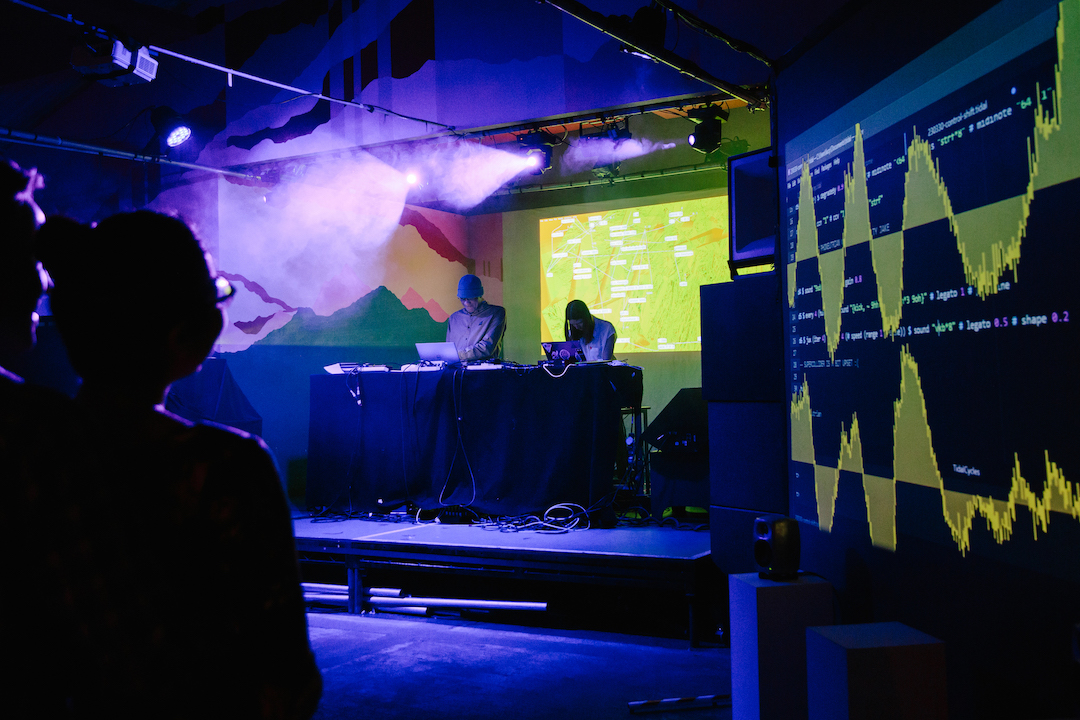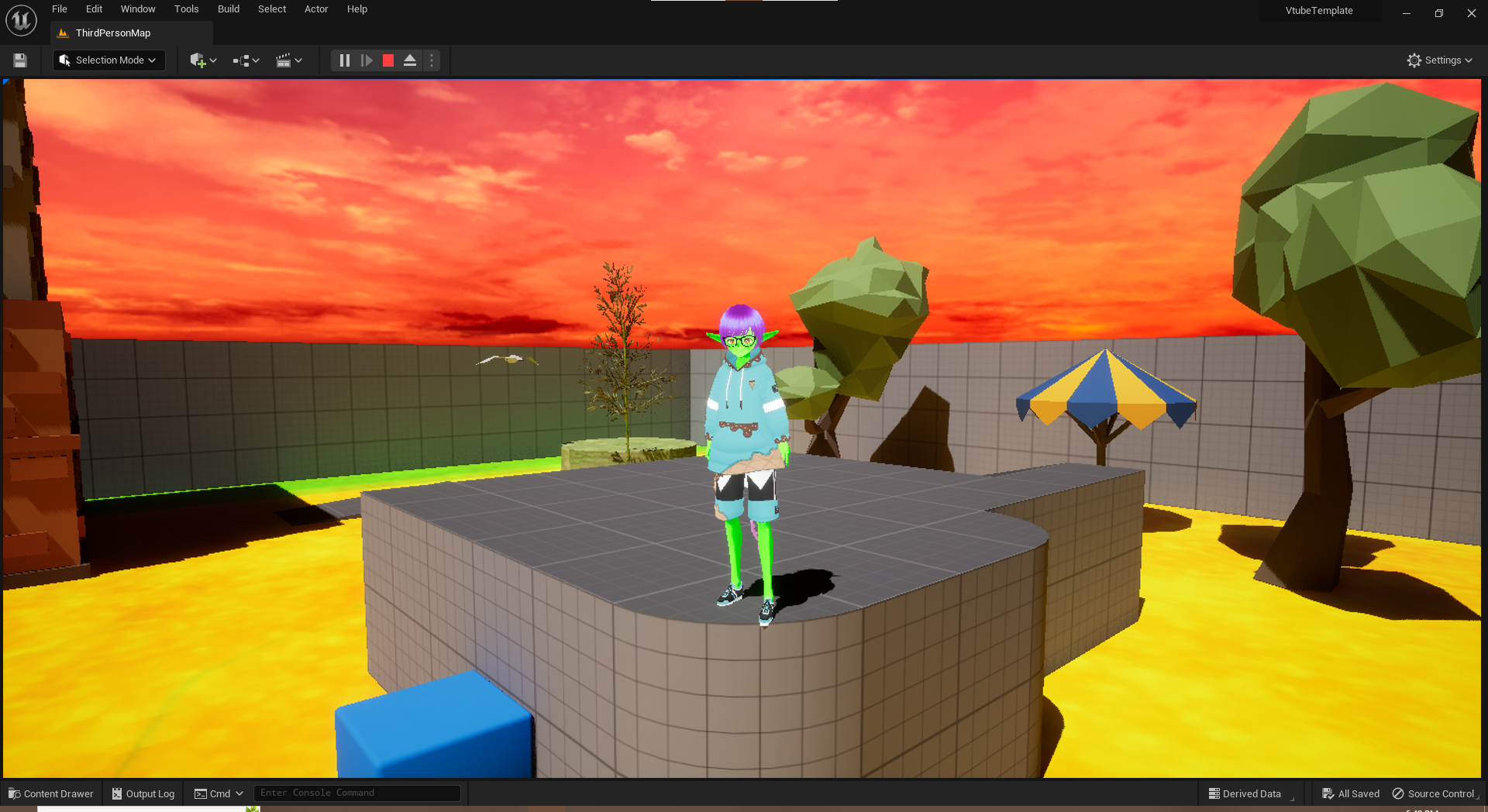Touching Resistance
PRRRRRT! explore how they embody electronic sound through touch and play.
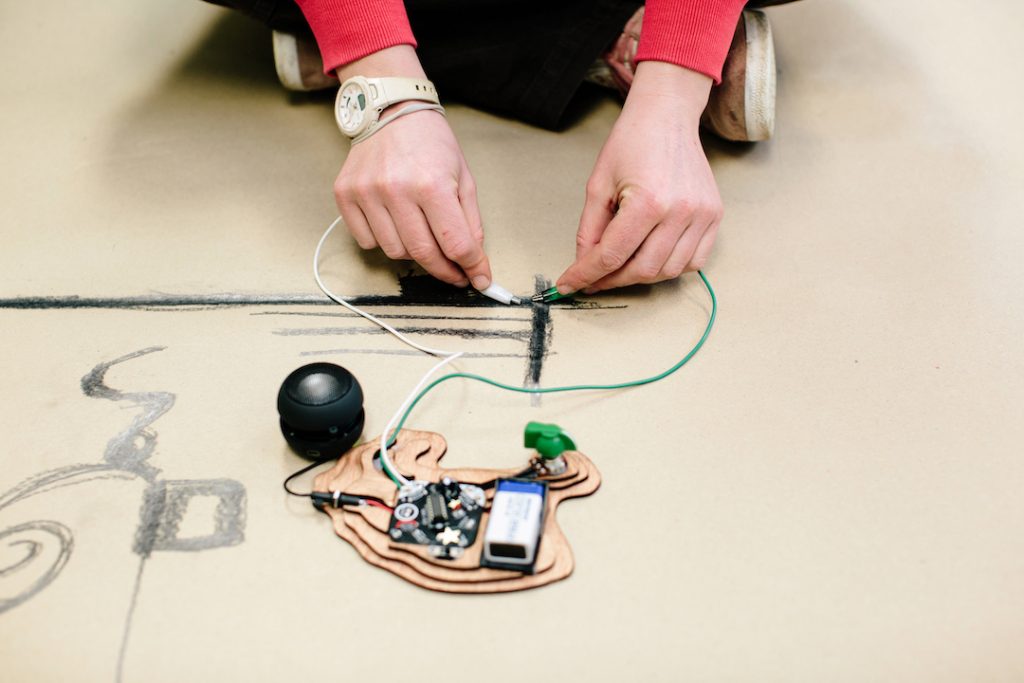
In January 2024, we used Innovate UK funding to commission blogs from artists involved in Control Shift to share how their work relates to different approaches to technology. Below, PRRRRRT! explore how technology relates to our bodies, emotions and movements
Over to you, PRRRRRT!:
We started PRRRRRT! as a way to bring electronic sound to life in different ways, moving away from the standard knob twiddling on a control interface. Over the past few years we’ve experimented with a number of ways to do this involving the body. This approach provokes a different kind of closeness to objects, where we become part of a sound-making circuit through touch, and the body becomes part of the technical system.
Our electronic sounds come from a board we named Nom Nom Nand Nor (or NNNN for short) based on a circuit that we found in Nicholas Collins’ Hand-made Electronic Music (the book is gorgeous, but you can also download the original PDF for free here). We aimed to design a circuit board that is easy to build, writing the names of the parts in larger text and spacing out the components so they are less fiddly to assemble. We included multiple connection points to allow for different kinds of resistors to be attached to the board, expanding the possibilities for controlling sound using the body.
When you turn a conventional knob, a wiper sweeps along a path of resistance. The further along the path, the more resistance. A change in resistance changes the sound of the synthesiser. The path of resistance inside a knob restricts movement to a tiny twist. We can create our own paths of resistance using different materials, making use of the body in new ways. The following examples are from workshops experimenting with the NNNN, where we expand on different ways we have used it to play with sound through gesture.
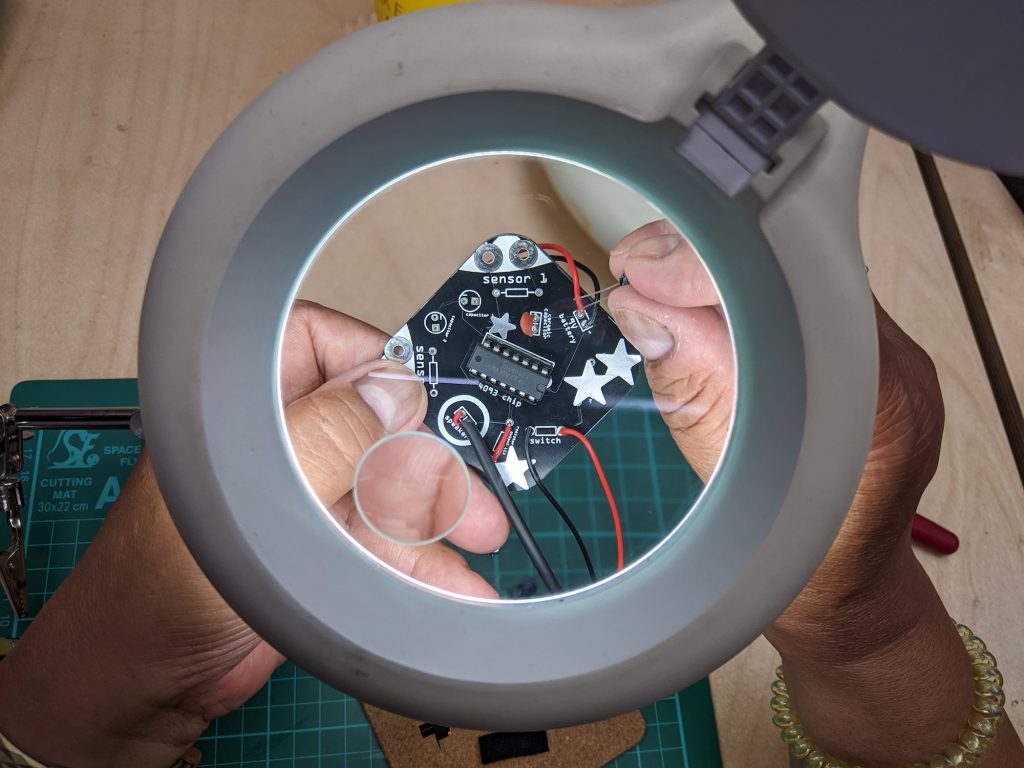

Drawing sounds : Choreographing interactions
We control sound with graphite marks drawn onto huge paper surfaces that we can move around on. We invite people to step onto the page and inside the instrument, connecting the marks to noise makers in different places and sweeping over them; listening. We can make marks anywhere we want, large or small, personal gestures, patterns, or joining with others to make collective experiments by combining our marks. Sounds are warped along the marks, and the graphite patterns are brought to life by the sounds that respond to them. This invitation to make marks that make sound also leaves a trace of where and how bodies move in space, making a physical choreography. Curiosity manifests as a sprawling, howling drawing.
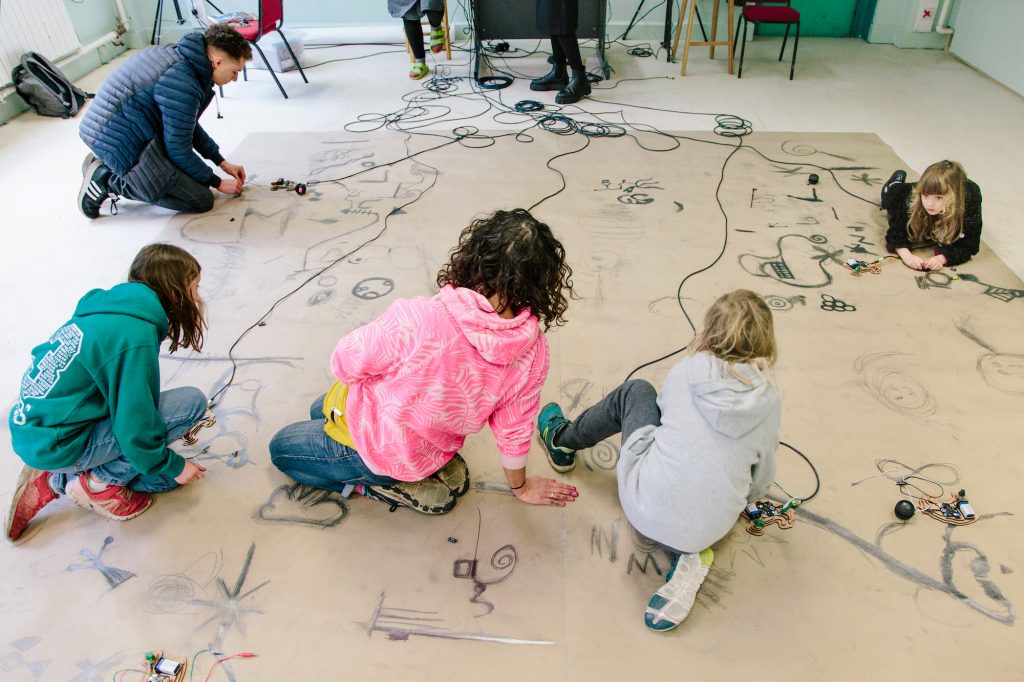
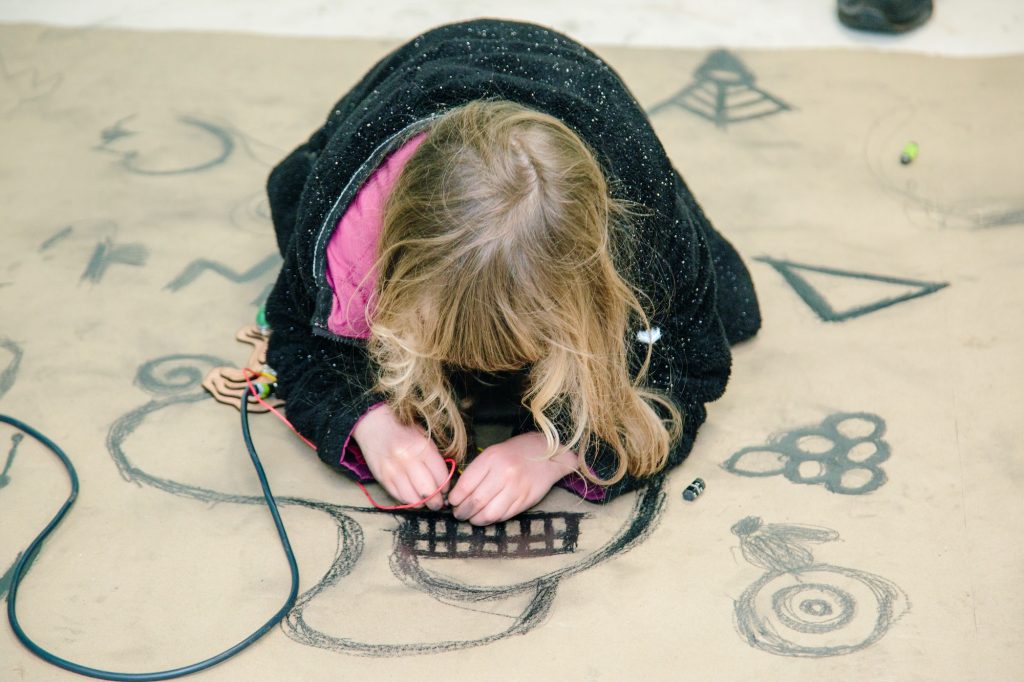
Pom-poms : Levelling the playing field
We control sound with carefully constructed conductive pompoms. Sounds are squished into the space as the soft, electronically infused yarns in the pom poms are squeezed together. The immediacy of this interaction, where a squeeze makes a sound, combined with the soft, non-intimidating nature of a hand-made pom pom dissolves any hierarchy that may exist within more conventional music-making situations. There is no ‘right way’ to play this instrument, and therefore no distinction between the level of music-making experience each participant may bring with them. This freedom from expectations or fear of ‘not getting it right’ stimulates a playful atmosphere where the emphasis becomes less about ‘controlling the interface’ and aiming for a specific sound, and more about how much sound is made, and when. The ‘inaccuracy’ of this method of playing can be embraced as a positive and playful feature that is highly conducive to playing with others, rather than solo.
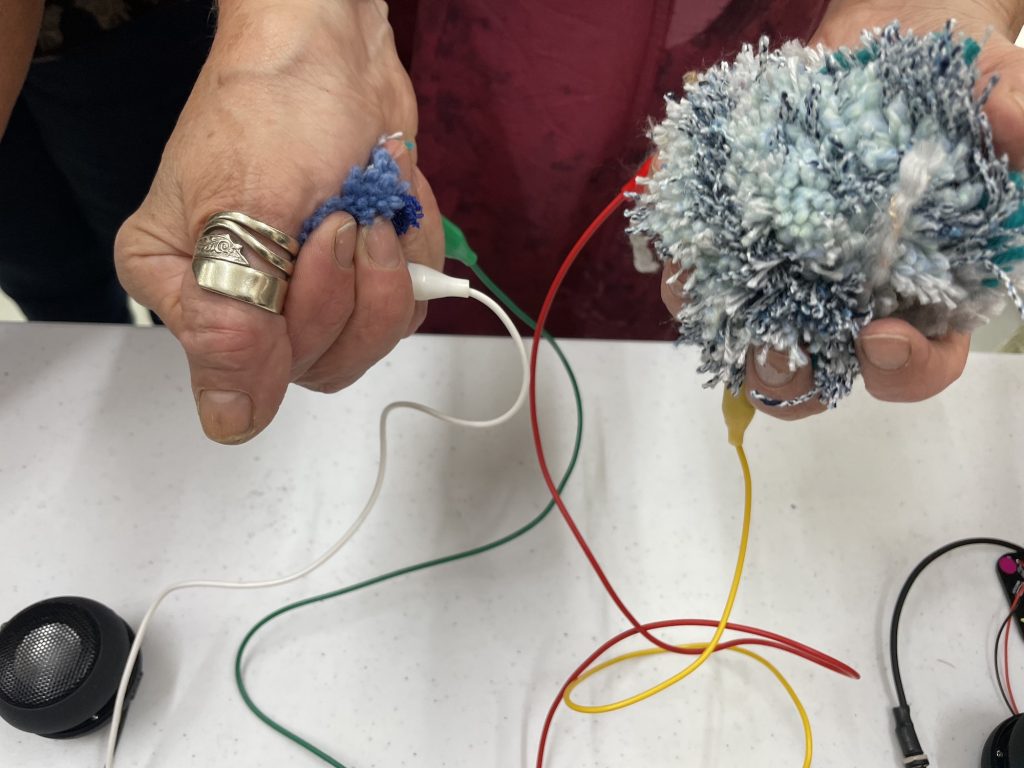
Masks : Embodiment : gestural music making
We control sound with light sensors embedded into the eye sockets of eerie masks. We perform sounds through a strange show of strobing lights and shadows together – sounds siren, overlap and are in sync with the flashing lights. By physically wearing the mask, our bodies become inseparable from the instrument. The masks hide our faces, and create a blank backdrop for new expressions using light, sound and movement. The instrument works best in a dark space, using torches that spotlight the player. Each gesture becomes theatrical, and the player behind the mask is choreographed in a joyful and bizarre performance, guided by sound.
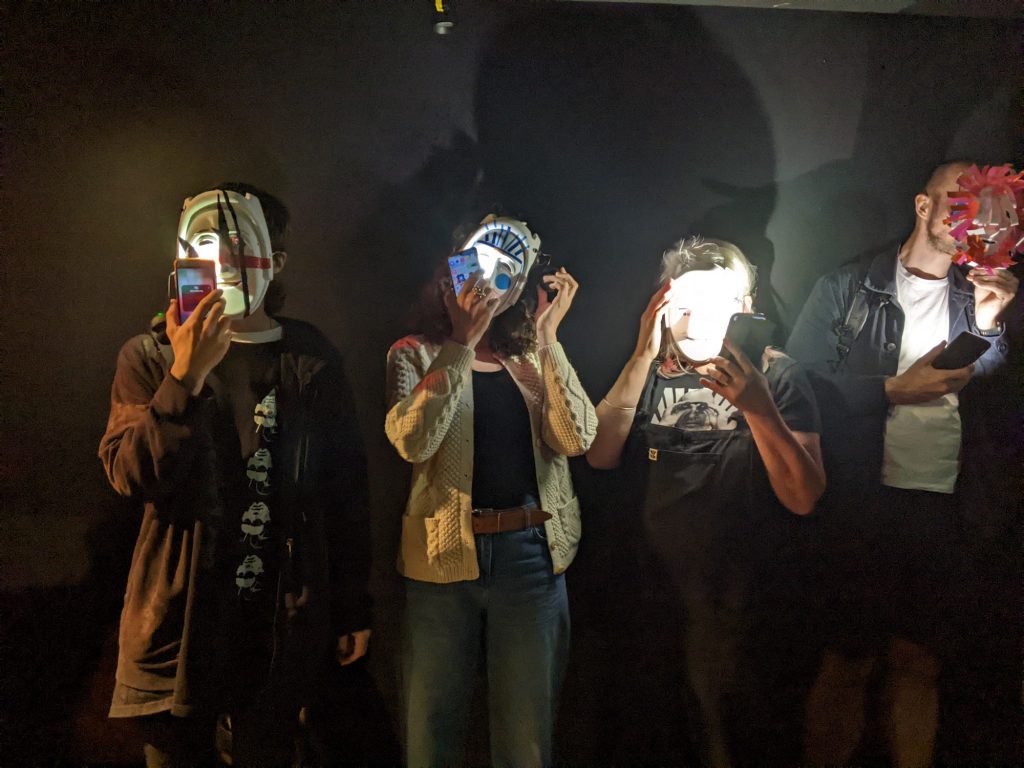
Soft Toys : Imaginative circuits
We control sound with strokes on soft toys. Noises are embedded in soft dragons, panda teddies, and hand-made dolls, and they come to life when conductive threads are stroked together. People activate the noise with a gentle gesture towards a soft creature they care about. The shape and construction of the toys suggest unique methods of control. Paws can be pressed together, tails can be shaken, ears can be lifted. Circuits are woven around existing shapes and pathways, and sounds are given new meaning by the character of the toy they are coming from. Narrative and storytelling creeps into the design process, and imagination starts to inform decisions, lending care and meaning to the process of circuit design.

In all of these examples, we want to break control interfaces out of their black boxes. By getting as close as we can to the circuits themselves, the lines between the player, the control interface and the noise machine are blurred. The act of turning a knob is on rails with no room for manoeuvre. We would like to shatter this open, and instead, emphasise the body as part of the system. The warped noises from graphite patterns, squelches from the pom poms, siren masks, and caressing creatures represent the nuanced way that we are using our bodies to directly impact the results of the system. These experimental ways of making noises with a simple machine have a direct impact on the feel of how the sound is performed. The ways that we are squeezing, caressing, wearing or making gives us an intimate and nuanced relationship with the technology.
For us, this intimate and nuanced relationship is a way to challenge the hierarchy that is so often prevalent in music technology systems. This really plays out in the graphite workshop we ran at Feeling Machines, where the landscape of the patterns was so big you could literally be inside it – we were making the marks as well as lying and sitting among them. Players could explore solo ideas, tuning into their own sound among the cloud of sounds, or they could hook onto another, responding and collaborating with players they can hear but may not always see. The network of drawings, bodies and sounds is unstable and unpredictable, but always connected. Each designer, or player in the circuit approached the task with their own curiosities and experiences. Their unique contribution fed into a network of activity and noise, where players became curious about other people’s ideas as well as their own. Interwoven feedback loops were made up of watching, listening, playing, collaborating, drawing, performing, and re-designing. The body of instruments was a collaborative and dynamic exploration of sound, and the changes we made with our bodies were part of the system, rather than outside or separate to it. Graphite marks and wires became a messy landscape – criss-crossing and joining, in the same way that the soundscapes were overlapping, all entangled without clear boundaries.
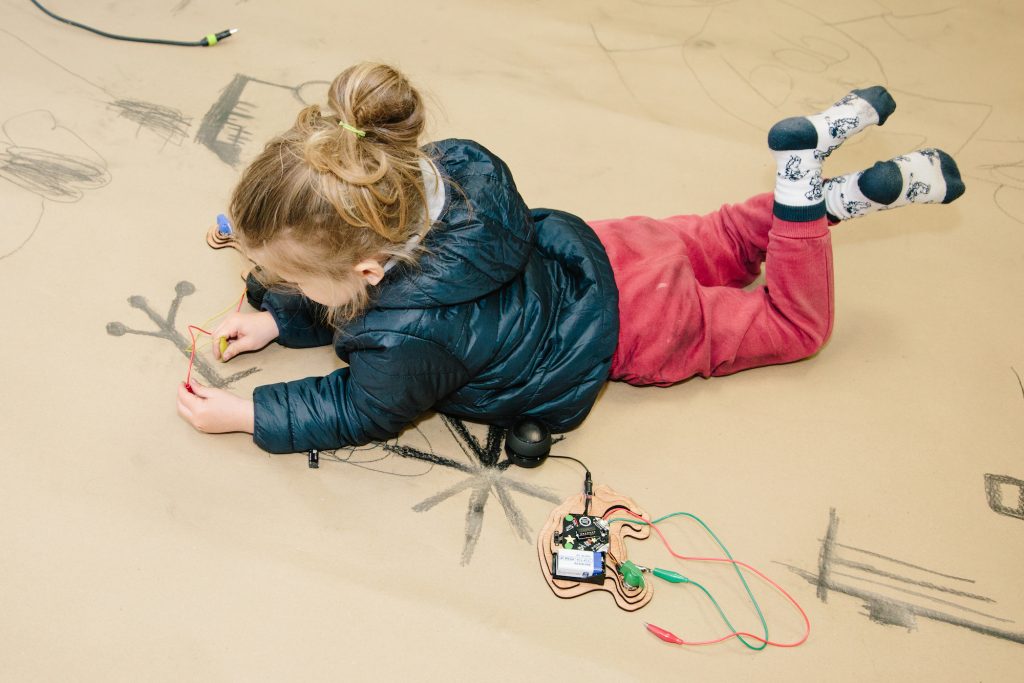

About PRRRRRT!
PRRRRRT! Is a collaboration between Becca Rose, Kathy Hinde and Jasmine Butt.
Becca Rose is an artist, maker, and educator working at the intersection of craft practice, socially engaged arts, and creative technologies. She puts on participatory events or workshops such as working with DIY electronic-textile sensors, or creating tactile digital games.
Kathy Hinde’s work grows from a partnership between nature and technology expressed through immersive audio-visual installations and performances that combine sound, sculpture, image and light. Kathy is a member of Bristol Experimental Expanded Film (BEEF).
Jasmine Butt is an artist, researcher and former synth builder, whose work is driven by a desire to facilitate close encounters with the mechanics of synthesised sound. She is currently based at UWE exploring novel methods of synthesising audio using visual inputs such as handmade / hand-drawn graphic patterns.
